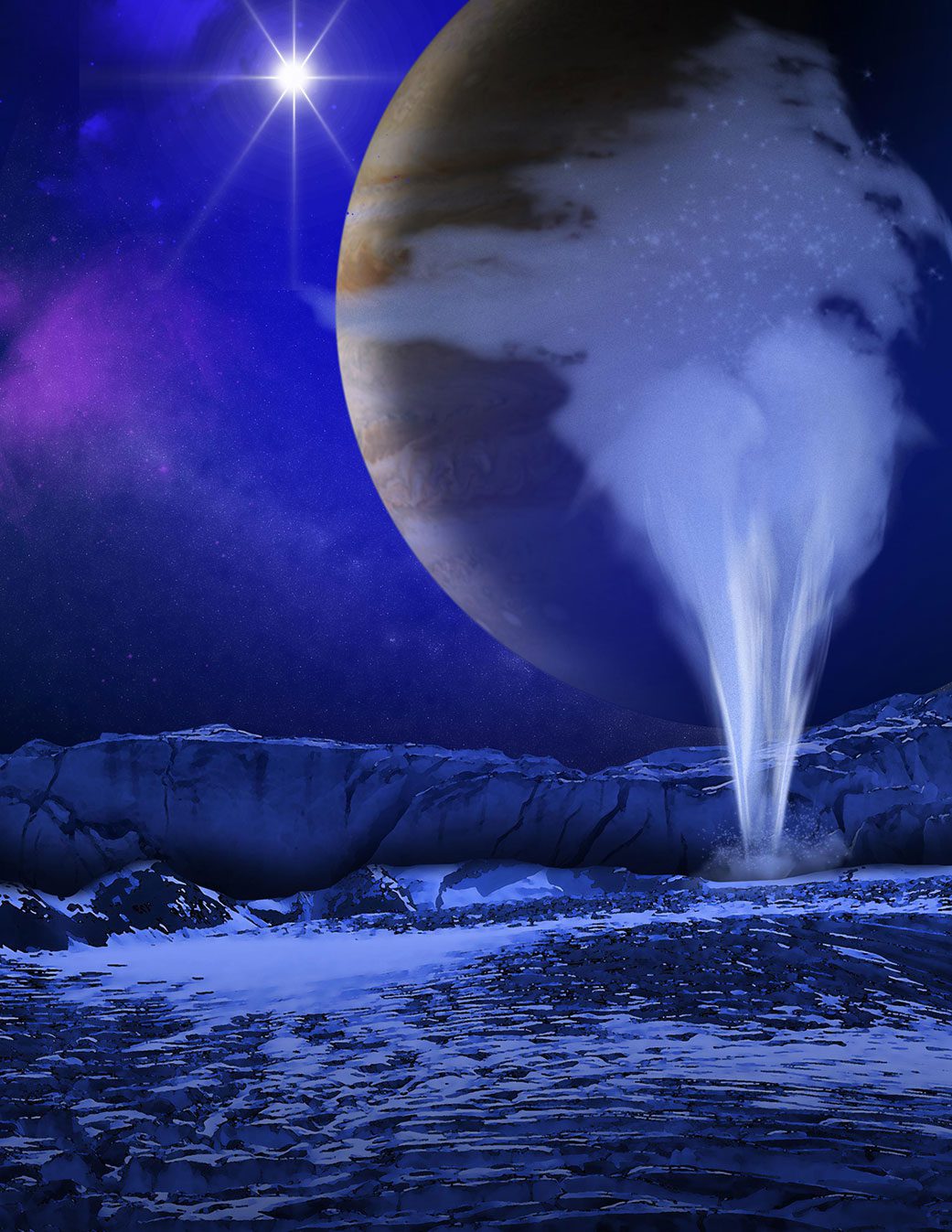Beneath Jupiter’s icy moon Europa’s frozen crust lays a deep ocean that could be habitable. But scientists now think there is another type of water reservoir on the distant moon: lakes within the crust. These bodies of water might be responsible for eruptions happening on the surface of this icy world.
New computer simulations have looked at how huge lakes are likely to stress the ice around them as their temperature change. Water ice has a lower density than liquid water, so if one of these lakes begins to freeze, its volume will expand putting pressure on the surrounding walls.
For some of these lakes, the pressure will be too much and cracks in the surface will have water spew out. This might happen either as plumes of vapor spreading into space or as cryovolcanoes, eruptions of slushy, briny ice rather than the hot volcanos we have on Earth and on the fellow Jovian moon, Io.
“We demonstrated that plumes or cryolava flows could mean there are shallow liquid reservoirs below, which Europa Clipper would be able to detect,” lead author of the research Elodie Lesage, Europa scientist at NASA’s Jet Propulsion Laboratory, said in a statement.
“Our results give new insights into how deep the water might be that’s driving surface activity, including plumes. And the water should be shallow enough that it can be detected by multiple Europa Clipper instruments.”
This illustration depicts a plume of water vapor that could potentially be emitted from the icy surface of Jupiter’s moon Europa. Image credit: NASA/ESA/K. Retherford/SWRI
Europa Clipper is the NASA mission that will launch in 2024 to study this icy moon. The presence of these possible lakes will hopefully be confirmed by the suit of instruments on board the spacecraft. For example, the Radar for Europa Assessment and Sounding: Ocean to Near-surface (REASON) is designed to study the icy crust.
The model suggests that these reservoirs might exist very close to the surface, maybe 4 to 8 kilometers (2.5 to five miles) deep. The crust is expected to be 15 to 25 kilometers (10 to 15 miles) in thickness.
“The new work shows that water bodies in the shallow subsurface could be unstable if stresses exceed the strength of the ice and could be associated with plumes rising above the surface,” added Don Blankenship, of the University of Texas Institute for Geophysics in Austin, Texas, who leads the radar instrument team. “That means REASON could be able to see water bodies in the same places that you see plumes.”
The work is published in the Planetary Science Journal.
Source Link: Lakes Within Europa’s Icy Crust Could Erupt With Flowing, Slushy Ice "Lava"
